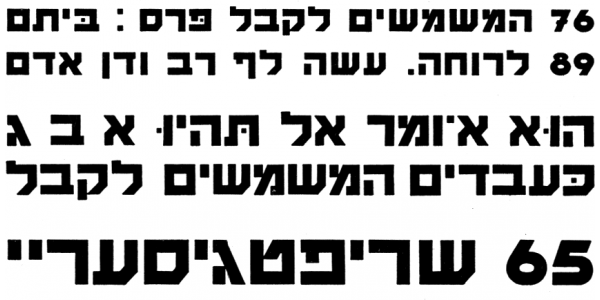. . .
Chaim & Aviva is a multi-script typeface with great story behind it. Chaim means „life”. Aviva means „spring” but also „rebirth”. Chaim was originally a Hebrew typeface designed around 1929 in Warsaw by Jan Levitt to set newspapers and other prints in Yiddish. It was consider very modern and avant-garde because it did not refer to traditional calligraphic script. It quickly gained popularity, was widely used for posters and banners, first in Palestine, then in the State of Israel. Until recently, it was one of the most popular typefaces in Israel. Aviva was also designed in Warsaw by a polish designer Zofia Janina Borysiewicz as her graduation project in Communication Design. With her background in cultural anthropology, she value research as an important part of a designing process so she spent almost half year in Israel to research archives and interview specialist in history of Hebrew type design. The conclusion was that Chaim is not so present in the typographic landscape anymore. She wanted to restore it to use by making new digitalisation and designing a complementary Latin – Aviva. By this symbolic action she wanted to emphasised the problem of latinisation of typefaces and reverse the typical Latin-centric direction of multi-script design by starting the design process from a non-Latin script. The new typeface family has two weights – bold and condensed, in two scripts Hebrew (new digitalisation) and Latin (designed by Borysiewicz). It contains original and new set of digits and some completely new glyphs (like ampersand) and Polish diacritics that are making it easier to use nowadays, especially in Poland. It was already used in visual identification of Yiddish Cultural Center, Epifanie Music Festival, Refugee Welcome and more.

